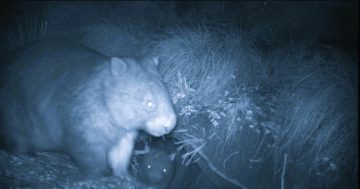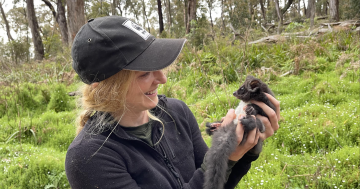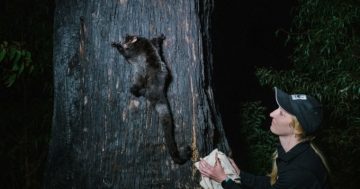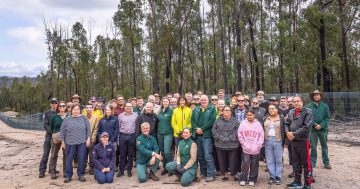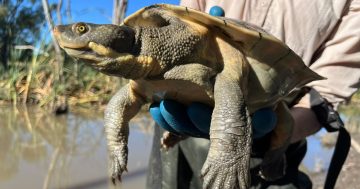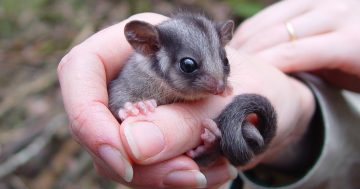
With its large fluffy ears and capacity for flight, the Greater Glider is often referred to as a flying koala. Photo: WWF.
The work of one Wagga student is helping to detect and protect a vulnerable population of Australia’s largest gliding mammal – Greater Gliders – in southern NSW.
“Some people will refer to them as ‘flying koalas’ due to their large fluffy ears, eucalypt diet and gliding capabilities,” Charles Sturt University (CSU) student Mikayla Green said. Her research sometimes has her walking Woomargama National Park by night in her search of them.

Mikayla Green volunteers in native wildlife rescue and rehabilitation for WIRES. Photo: Charles Sturt University.
Woomargama sits snugly above the NSW-Victorian border between the in southern NSW towns of Holbrook and Albury and is the largest protected area of forest west of the Great Dividing Range.
Like many forests in the south of the state, it was heavily impacted by the 2019/20 Black Summer bushfires; a further blow to native animal populations following years of drought.
For Mikayla – a fourth-year Bachelor of Animal Science student who has been studying at the CSU School of Agricultural, Environmental and Veterinary Sciences in Wagga Wagga – it’s important to her research.
With her eyes set on a career in wildlife conservation and ecology, she has taken on the task of assessing the impact of the bushfires on Greater Gliders as part of her honours research project in ecology.
“Greater Gliders are tree-dwelling mammals with the ability to glide up to 100 m through the air from tree to tree,” she said.
“They are Australia’s largest gliding mammal.
“They are nocturnal and will spend most of the night foraging on leaf tips high up in the canopy of old growth forests and during the daytime, they spend their time sleeping in the hollows of trees where they are safe from predators.”
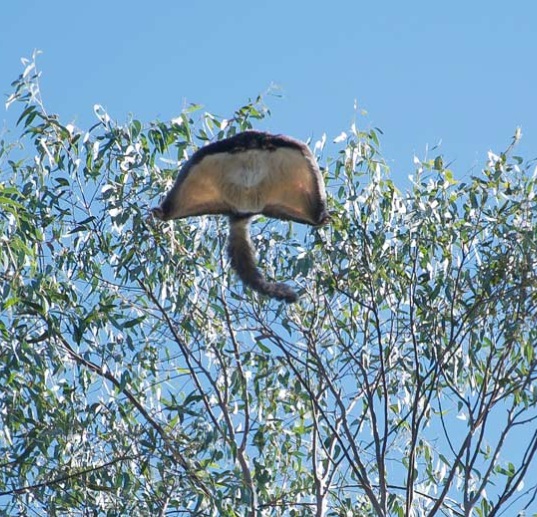
The Greater Gliders can fly up to 100 m from tree to tree. Photo: WWF.
These little marsupials can maintain up to 20 tree-trunk dens at any given time and with their very specific folivore diet (leaves and occasionally flowers), they are highly dependent on old growth forests.
A combination of logging, fire, climate change and habitat degradation has seen such a decline in population that they are listed as ‘vulnerable’, Mikayla said.
That’s why, last summer, as she completed the fieldwork portion of her project, she could be seen spotlighting within the national park at night.
“I am using the ‘double observer’ method of research, which involves two people ─ fellow honours student Lucy Wright and I ─ walking 32 set transect lines, each 300 m long, with a spotlight to look for wildlife eye-shine in the trees,” she explained.
“Once a bright light is shone directly towards a Greater Glider their eyes light up in a bright and yellowish shine. After eye-shine has been detected, the species of animal is recorded, as well as its location and any other specific relevant information”.
Mikayla’s honours research is part of research at the new Charles Sturt Gulbali Institute of Agriculture, Water and Environment and is supported by Murray Local Land Services through funding from the Australian Government’s Bushfire Recovery Program.
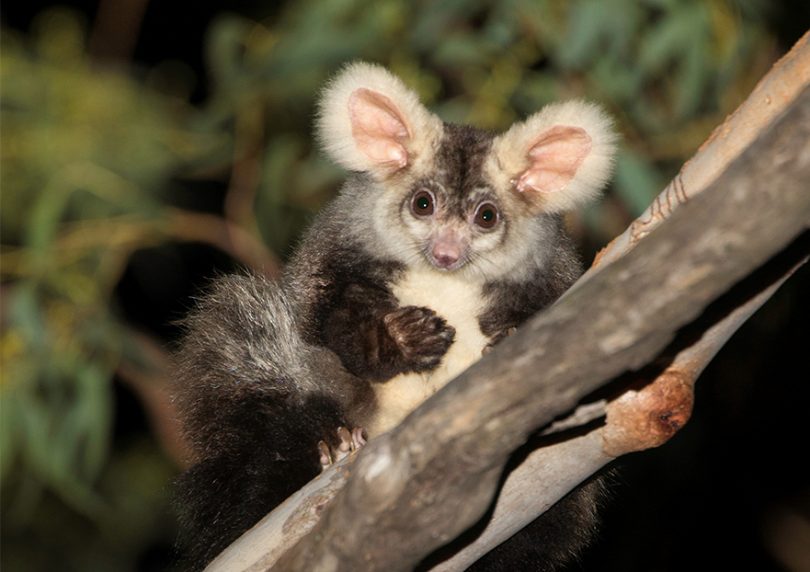
A third species of Greater Gliders has recently been discovered in Northern Queensland, raising hopes for the vulnerable species. Photo: Greening Australia.
She has complemented her studies with volunteer work, opting to donate her time to animal rescue organisation WIRES, where she’s involved with wildlife rescue and rehabilitation.
The experience has allowed her to care for a range of animals, including birds, possums, echidnas and kangaroo joeys, significantly growing her wildlife identification and handling skills.
“Calls come in for a variety of wildlife-related reasons such as injury, sickness and orphaning,” she said.
Mikayla said there was still a lot of work and statistical analysis to complete until conclusions can be drawn from the Greater Glider project data.
“So far, the data is indicating that Greater Gliders are in much higher densities in the unburnt areas of Woomargama National Park compared to those areas which have been impacted by burning,” she said.
“I hope that by conducting this research about Greater Gliders in Woomargama National Park that the data can be used to monitor and potentially initiate strategies to conserve the population within the Woomargama National Park.
“I also hope that through media recognition my research brings attention to the vulnerability and variety of endemic animals we have here in Australia.”
Hopes for the species have been buoyed by a newly-discovered northern species, which lives in the eucalyptus forests between Mackay and Cairns in Queensland.
This, according to scientists, is the smallest of the glider clan, growing to the size of a small ringtail possum, which is up to about a foot long.






